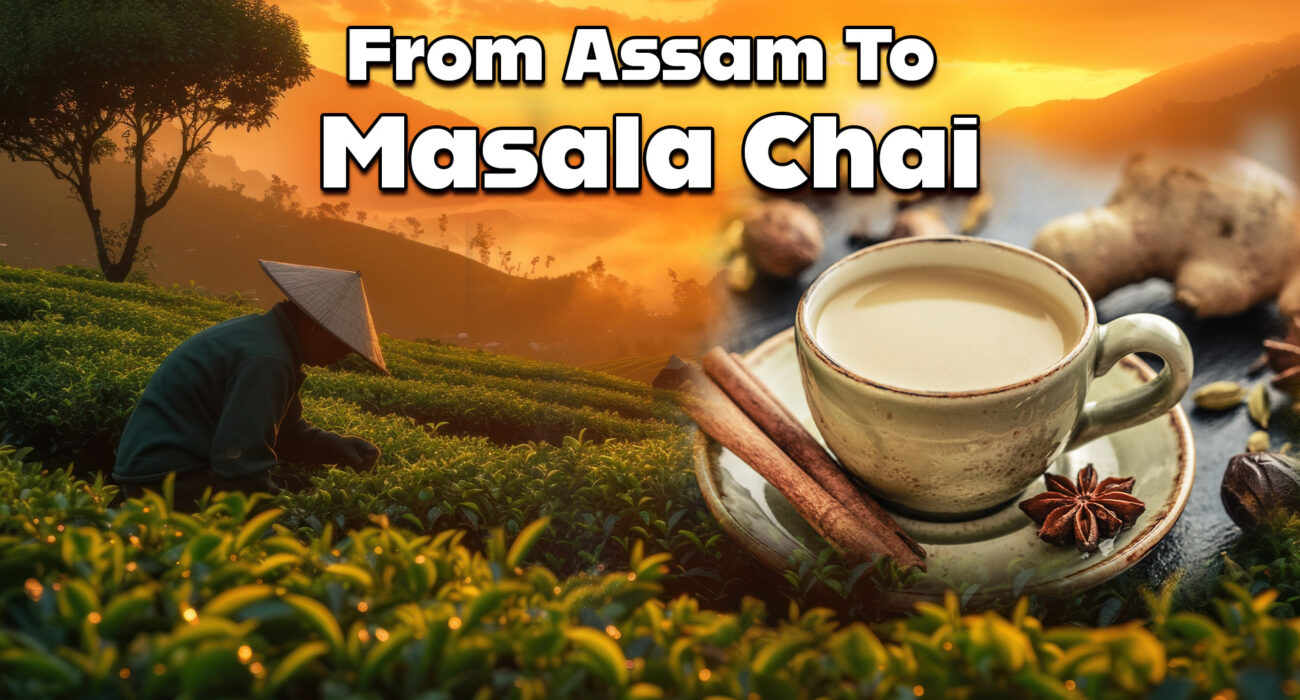From Assam To Masala Chai: 10 Most Popular Types Of Indian Tea
Explore the aromatic world of popular Indian tea flavors with our comprehensive guide. From Masala Chai to the smooth richness of Assam Tea, there’s a flavor to suit everyone. The morning of every Indian begins with a cup of tea.
ચા બધાનો મનપસંદ છે, ઘરથી લેકર ઓફિસ સુધી! જો કોઈને ઊર્જા લાગે અથવા ફક્ત થોડી રિલેક્સેશન, ચા દિવસભરની સમસ્યાઓનો સમાધાન છે. જો તમે એકલા પીઓ છો કે મિત્રો સાથે શેર કરો, ચા દરેક પીણાંને વિશેષ બનાવે છે. Read along to explore the popular teas in India.
How Many Types Of Popular Tea Flavours In India?
1. Chai
Chai is an emotion for Indians. People make it with milk, sugar, and water, and sometimes add cloves, ginger, or cardamom for extra flavor. Indians start their day with a chai. It’s super popular, and everyone loves it for a quick pick-me-up.
2. Assam Tea
As the name suggests, Assam tea originates from the Assam region, famous for its beautiful tea farms. It has a strong, malty flavor and a rich color. In India, people mostly love to have it for breakfast. The special weather in the Brahmaputra Valley gives this tea its unique flavor and smell.
3. Masala Chai
Another popular Indian tea is Masala Chai. It is a spicier version of regular chai. Masala chai is made using black pepper, fennel, nutmeg, and other spices with tea leaves, milk, and sugar. Every Indian family might have its own special way of making Masala Chai, which makes drinking feel personal and unique.
4. Darjeeling Tea
Darjeeling tea has a delicate, refreshing flavor, a soothing aroma, and a golden color. It produces a variety of flushes (harvests), which offer a unique taste. It comes from the Darjeeling region in India, popularly known for its beautiful hills and cool weather. Perfect for enjoying at any time of the day, whether hot or cold.
5. Nilgiri Tea
Nilgiri Tea originates from the Nilgiri region in South India, famous for its lush greenery and beautiful misty mountains. It has a smooth and mellow flavor with a hint of citrus. Nilgiri tea is loved for its refreshing taste and bright color. Whether a person sips it in the morning or relaxes with a cup in the afternoon, Nilgiri tea is sure to delight your senses.
6. White Tea
Darjeeling and Assam regions make special white teas known for their delicate flavors. it is made from the youngest leaves and buds, processed in a simple way to keep their natural taste. These teas have lots of good stuff called antioxidants and taste gentle and sweet.
7. Oolong Tea
Oolong tea is another popular Indian tea that’s special for its uniqueness and taste. It’s between green and black tea, having a unique taste that Indian people mostly love. It is made using partially oxidized leaves, giving it a rich flavor with floral or fruity notes. People enjoy oolong tea for its balance of flavors and refreshing qualities. So, if you want a delicious and satisfying tea experience, try a cup of oolong!
8. Green Tea
Green tea is a popular and healthy choice for many tea lovers. It’s made from unoxidized leaves, keeping its natural freshness intact. Packed with antioxidants and nutrients, it’s a great option for anyone looking to add a little extra goodness to their day. So, why not sip on some green tea and enjoy its delicious flavor and wellness perks?
9. Kangra Tea
Kangra tea is a special type of Indian tea that comes from the Kangra region of India. It’s loved for its unique flavor and high quality. Whether people prefer hot or cold tea, Kangra tea has something that can offer a soothing taste and a refreshing boost.
10. Ayurvedic Tea
Ayurvedic tea is a special kind of tea that’s crafted carefully with wellness in mind. It’s a blend of traditional Ayurvedic herbs and spices with tea leaves, creating a flavorful and beneficial beverage. Ayurvedic tea is known for its healing properties and is often enjoyed for its ability to promote balance and harmony within the body.
Whether you’re sipping on Darjeeling or Assam, indulging in the delicate flavors of white tea, or exploring the wellness benefits of Ayurvedic blends, there’s a world of tea waiting to be discovered. From the foothills of the Himalayas to the misty mountains of Nilgiri, each cup tells a story of tradition, flavor, and culture. So, why not embark on your tea journey and experience the richness and diversity that the world of tea has to offer?











